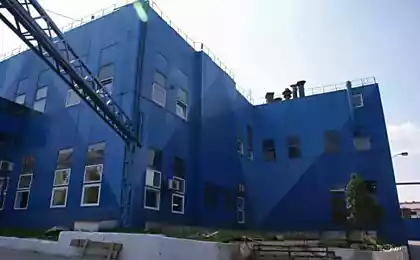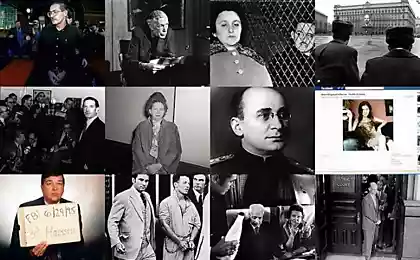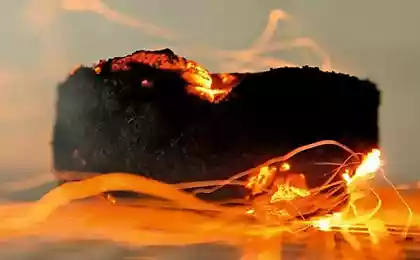5273
The most iconic black-and-white televisions Soviet production.
January 6, 1934 in Leningrad "Plant Kozitsky" on American license was issued the first Soviet electronic television receiver TC-1. Today overview of the most iconic black-and-white television Soviet production.
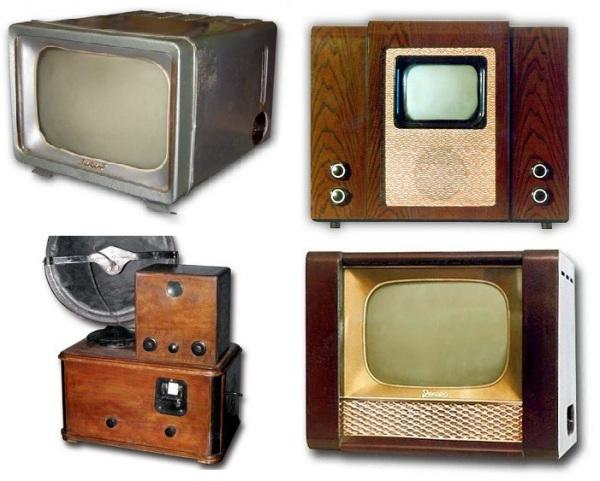
TK-1
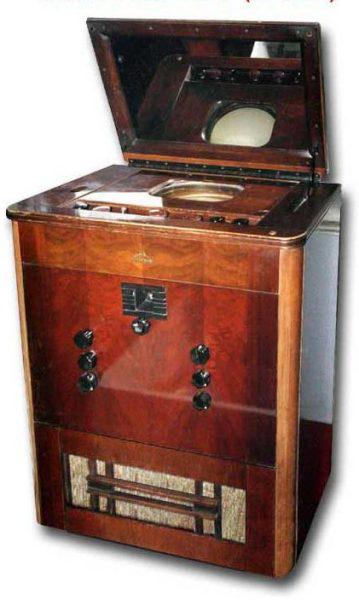
Electronic television receiver TC-1
Television receiver TC-1 is a very bulky cabinet with a vertical and a horizontal CRT screen. The viewer should not look at the screen, and its reflection in the mirror is attached to the inside of the flip cover tables. Before viewing the cover must be fitted at an angle to the screen. For quality settings it was necessary to adjust the handles 14, which required specific technical knowledge and practical skills.
TK-1 TV set in the palaces of culture, in the red corner, and workers' clubs. Today, TC-1, released the serial number 172 can be seen in the Central Museum of Communications. Popov.
B-2
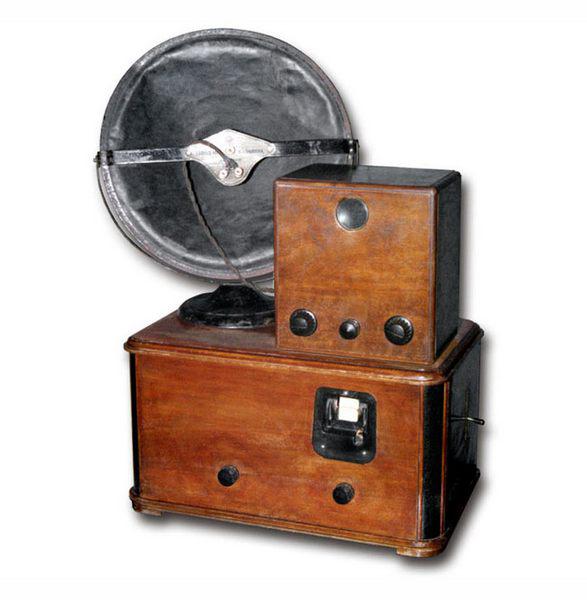
Mechanical TV B-2
The first opto-mechanical TV brand "B-2" screen size 3x4 cm was developed by engineer AY Breitbart. In 1931, the newspaper "Pravda" message appears: "Tomorrow will be the first time in the USSR produced experimental television broadcasts (Farsight)." A year later, in April 1932, Leningrad plant "Comintern" started production of the first Soviet television.
It is worth noting that in the 1930s the Soviet TVs, as, indeed, any other, were quite expensive pleasure. At the salary of a few hundred rubles their price was about 10 thousand rubles.
Moskvich-T1
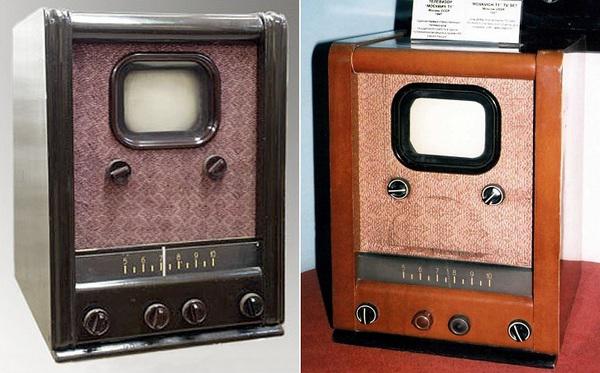
TV Moskvich-T1, released in 1946 - the first Soviet television, which was first used standard definition 625 lines. While none of the countries did not have the device with a high-definition image. In the TV was integrated VHF-FM receiver allows you to receive broadcasting programs with frequency modulation.
However, shortcomings in this unit was much more: the high price of TV (3500 rubles), making it a luxury even for very wealthy people, rapid failure of the tube (4-6 months of work), problems with spare parts and service. In addition, television broadcasting at the time was irregular - only 2 days a week from 19 to 23 hours. Televisions have accumulated in the trade network and became unprofitable. In early 1949 their production was discontinued.
KVN-49
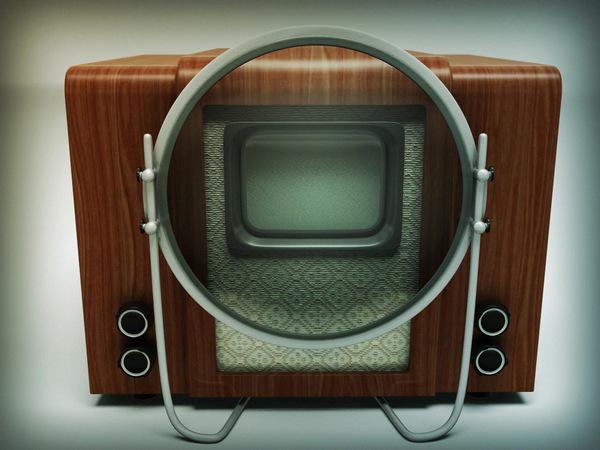
Soviet electronic TV KVN-49
The first truly Soviet electronic TV became established in 1949 the legendary KVN-49. There was so little TV screen (105h140 mm), that is more or less comfortable watching TV in front of a set of lenses that were filled with distilled water. The TV tubes was 16, and was designed to receive the first three TV channels. TV KVN-49 was worth more than 900 rubles (some average wage), produced until 1960, gradually modernized.
This TV was and Joseph Stalin.
TV "Record A»
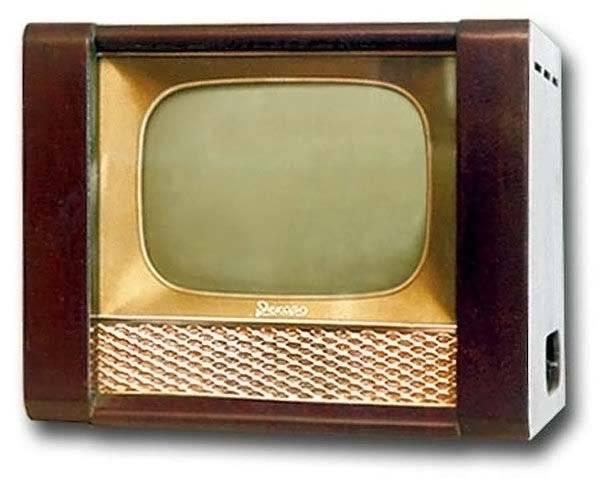
Since the early 1950s at "Electrosignal" (Voronezh) and at the factory in Alexandria began producing television "Record". A distinctive feature of the first television "Record" was that they could take 5 channels. In 1956, TV "Record" at the international exhibition in Brussels received the "Grand Gold Medal", and in the early 1960s, one in five television in homes Soviet citizens was precisely this brand.
It is worth noting that even the more recent television sets "Record" were unsafe due to the fact that TV is the chassis mains voltage of 220V, and it depended on how was inserted into the plug socket.
TV «Evening»
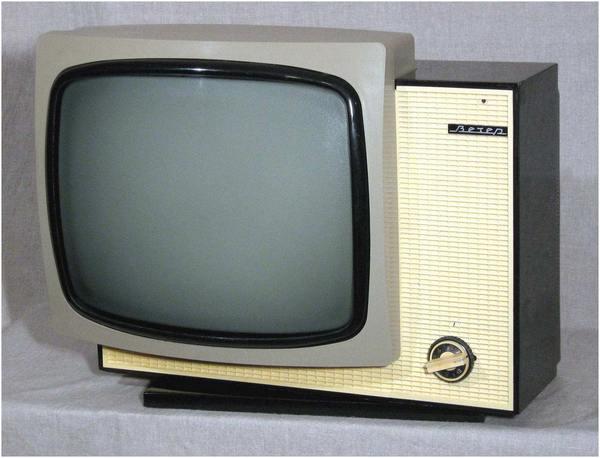
In 1965, at the Leningrad plant Kozitsky was released tube-conductor TV black-and-white image 2 Class "Evening". It was built entirely on transistors. CRT Size - 47 m. This Soviet television has one feature - automatic brightness control. The brightness of the image varies depending on the amount of light the room.
TV "Electronics - VL100»

Small-sized TV Electronics overhead 100
Black and white portable TV "Electronics overhead 100" produced in September 1969. Its release was timed to coincide with the 100th anniversary of the birth of Vladimir Ilyich Lenin, noted that in 1970. "VL-100" stood for "Vladimir Lenin 100 years." This TV is manufactured on silicon and germanium transistors and could work on the lighting network via the mains and battery type 10KNG-1, 5, and from any source of DC power 12 V. Despite the small screen, the TV was extremely popular - it was easy, reliable, and inexpensive mobile (140 rubles).
Interestingly, the TV was on sale, and as a designer, "Do It Yourself". Buy it can be had for $ 100. The structure of the designer were kinescope configured board, body, knobs and fasteners. The instructions suggested unsolder several bundles, and then assemble the TV.
TV "Dawn»
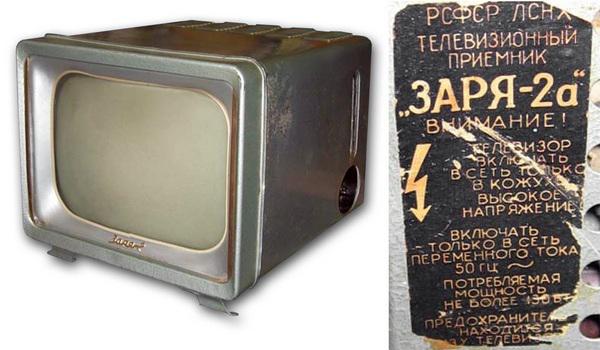
TV "Dawn" was produced from the late 1950s and was conceived as a massive and cheap (only 118 rubles) TV. He worked for 5 diodes 12 and led lamps reception on Channel 5. Image size 210h280 mm. The main drawback of this TV sound quality was poor. In addition, he was carried in a metal case, and it fell voltage.
TV "Horizon-101»
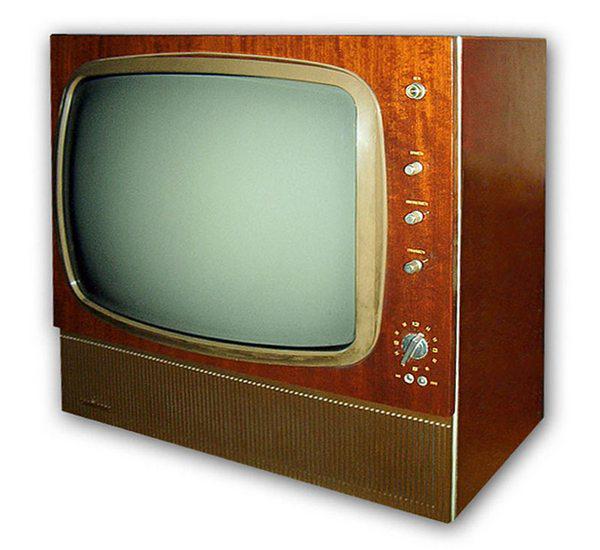
Black-and-white tube-transistor television with a screen diagonal of 65 cm "Horizon 101" in serial production was launched in 1970. Produced at the Minsk radio factory. In the scheme of the TV were applied all the latest technological advances in recent years, including the speaker system with bass reflex gated.
Teleradiola "Kharkiv»
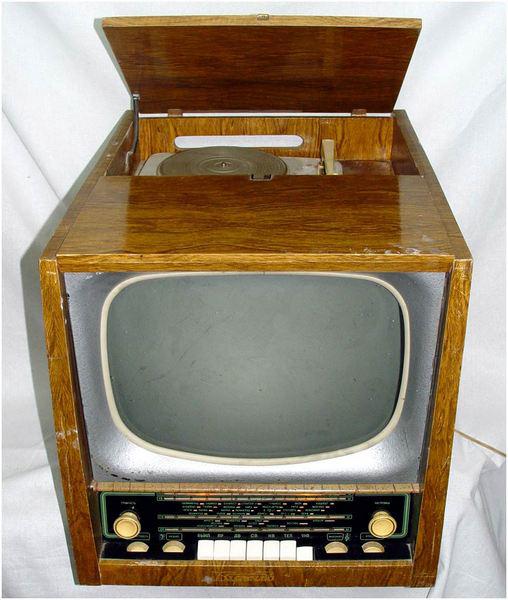
Teleradiola "Kharkiv", released in 1959, consisted of TV, radio and Class 2 universal EPA. Teleradiola was equipped with broadband loudspeaker and create normal audio, even for large rooms. To switch the TV and the receiver on different ranges produced using semiklavishnogo switch. In 1961 teleradiola "Kharkiv" cost 360 rubles. Today, this model is quite rare and is popular with the retro design of cafes and other similar establishments, as well as from private collectors.
It is interesting
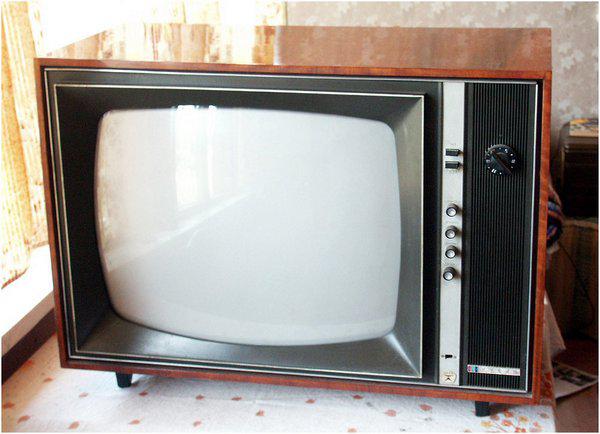
The first Soviet color TV Rubin 401
The first Soviet color TV "Ruby 401" appeared in 1967. His dull paint could be considered only in a dark room. First broadcast program in the USSR held November 7, 1967. But for a long time color televisions showing in black and white color, pleasing their owners flowers only on holidays. Today, the market can find the most unusual models of televisions that can surprise even the modern man.

TK-1

Electronic television receiver TC-1
Television receiver TC-1 is a very bulky cabinet with a vertical and a horizontal CRT screen. The viewer should not look at the screen, and its reflection in the mirror is attached to the inside of the flip cover tables. Before viewing the cover must be fitted at an angle to the screen. For quality settings it was necessary to adjust the handles 14, which required specific technical knowledge and practical skills.
TK-1 TV set in the palaces of culture, in the red corner, and workers' clubs. Today, TC-1, released the serial number 172 can be seen in the Central Museum of Communications. Popov.
B-2

Mechanical TV B-2
The first opto-mechanical TV brand "B-2" screen size 3x4 cm was developed by engineer AY Breitbart. In 1931, the newspaper "Pravda" message appears: "Tomorrow will be the first time in the USSR produced experimental television broadcasts (Farsight)." A year later, in April 1932, Leningrad plant "Comintern" started production of the first Soviet television.
It is worth noting that in the 1930s the Soviet TVs, as, indeed, any other, were quite expensive pleasure. At the salary of a few hundred rubles their price was about 10 thousand rubles.
Moskvich-T1

TV Moskvich-T1, released in 1946 - the first Soviet television, which was first used standard definition 625 lines. While none of the countries did not have the device with a high-definition image. In the TV was integrated VHF-FM receiver allows you to receive broadcasting programs with frequency modulation.
However, shortcomings in this unit was much more: the high price of TV (3500 rubles), making it a luxury even for very wealthy people, rapid failure of the tube (4-6 months of work), problems with spare parts and service. In addition, television broadcasting at the time was irregular - only 2 days a week from 19 to 23 hours. Televisions have accumulated in the trade network and became unprofitable. In early 1949 their production was discontinued.
KVN-49

Soviet electronic TV KVN-49
The first truly Soviet electronic TV became established in 1949 the legendary KVN-49. There was so little TV screen (105h140 mm), that is more or less comfortable watching TV in front of a set of lenses that were filled with distilled water. The TV tubes was 16, and was designed to receive the first three TV channels. TV KVN-49 was worth more than 900 rubles (some average wage), produced until 1960, gradually modernized.
This TV was and Joseph Stalin.
TV "Record A»

Since the early 1950s at "Electrosignal" (Voronezh) and at the factory in Alexandria began producing television "Record". A distinctive feature of the first television "Record" was that they could take 5 channels. In 1956, TV "Record" at the international exhibition in Brussels received the "Grand Gold Medal", and in the early 1960s, one in five television in homes Soviet citizens was precisely this brand.
It is worth noting that even the more recent television sets "Record" were unsafe due to the fact that TV is the chassis mains voltage of 220V, and it depended on how was inserted into the plug socket.
TV «Evening»

In 1965, at the Leningrad plant Kozitsky was released tube-conductor TV black-and-white image 2 Class "Evening". It was built entirely on transistors. CRT Size - 47 m. This Soviet television has one feature - automatic brightness control. The brightness of the image varies depending on the amount of light the room.
TV "Electronics - VL100»

Small-sized TV Electronics overhead 100
Black and white portable TV "Electronics overhead 100" produced in September 1969. Its release was timed to coincide with the 100th anniversary of the birth of Vladimir Ilyich Lenin, noted that in 1970. "VL-100" stood for "Vladimir Lenin 100 years." This TV is manufactured on silicon and germanium transistors and could work on the lighting network via the mains and battery type 10KNG-1, 5, and from any source of DC power 12 V. Despite the small screen, the TV was extremely popular - it was easy, reliable, and inexpensive mobile (140 rubles).
Interestingly, the TV was on sale, and as a designer, "Do It Yourself". Buy it can be had for $ 100. The structure of the designer were kinescope configured board, body, knobs and fasteners. The instructions suggested unsolder several bundles, and then assemble the TV.
TV "Dawn»

TV "Dawn" was produced from the late 1950s and was conceived as a massive and cheap (only 118 rubles) TV. He worked for 5 diodes 12 and led lamps reception on Channel 5. Image size 210h280 mm. The main drawback of this TV sound quality was poor. In addition, he was carried in a metal case, and it fell voltage.
TV "Horizon-101»

Black-and-white tube-transistor television with a screen diagonal of 65 cm "Horizon 101" in serial production was launched in 1970. Produced at the Minsk radio factory. In the scheme of the TV were applied all the latest technological advances in recent years, including the speaker system with bass reflex gated.
Teleradiola "Kharkiv»

Teleradiola "Kharkiv", released in 1959, consisted of TV, radio and Class 2 universal EPA. Teleradiola was equipped with broadband loudspeaker and create normal audio, even for large rooms. To switch the TV and the receiver on different ranges produced using semiklavishnogo switch. In 1961 teleradiola "Kharkiv" cost 360 rubles. Today, this model is quite rare and is popular with the retro design of cafes and other similar establishments, as well as from private collectors.
It is interesting

The first Soviet color TV Rubin 401
The first Soviet color TV "Ruby 401" appeared in 1967. His dull paint could be considered only in a dark room. First broadcast program in the USSR held November 7, 1967. But for a long time color televisions showing in black and white color, pleasing their owners flowers only on holidays. Today, the market can find the most unusual models of televisions that can surprise even the modern man.


